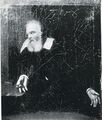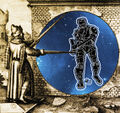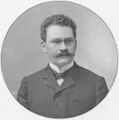Template:Selected anniversaries/June 22: Difference between revisions
No edit summary |
No edit summary |
||
| Line 54: | Line 54: | ||
File:Vandal Savage Field Report Peenemunde.jpg|link=Field Report Number One (Peenemunde)|1943: ''[[Field Report Number One (Peenemunde)|Field Report Number One (Peenemunde edition)]]'' reveals Nazi efforts to rewrite history by false accusing [[Galileo Galilei (nonfiction)|Galileo Galilei]] of committing [[crimes against mathematical constants]]. | File:Vandal Savage Field Report Peenemunde.jpg|link=Field Report Number One (Peenemunde)|1943: ''[[Field Report Number One (Peenemunde)|Field Report Number One (Peenemunde edition)]]'' reveals Nazi efforts to rewrite history by false accusing [[Galileo Galilei (nonfiction)|Galileo Galilei]] of committing [[crimes against mathematical constants]]. | ||
||1953: Mauro Francaviglia born ... mathematician and academic. | ||1953: Mauro Francaviglia born ... mathematician and academic. Pic search: https://www.google.com/search?q=mauro+francaviglia | ||
||1954: Karl Taylor Compton dies ... physicist and president of the Massachusetts Institute of Technology (MIT) from 1930 to 1948. | ||1954: Karl Taylor Compton dies ... physicist and president of the Massachusetts Institute of Technology (MIT) from 1930 to 1948. Pic. | ||
||1964: Vincent Justus Burnelli dies ... aeronautics engineer, instrumental in furthering the lifting body and flying wing concept. Pic. | ||1964: Vincent Justus Burnelli dies ... aeronautics engineer, instrumental in furthering the lifting body and flying wing concept. Pic. | ||
||1972: George Dawson Preston dies ... physicist specializing in crystallography and the structure of alloys. He was one of the first to use x-rays and electron diffraction to study the crystal structure of metals and alloys. He gives his name to the Guinier-Preston zone, discovered in 1938. Pic search: https://www.google.com/search?q=George+Dawson+Preston | |||
File:Gabriel Sudan 1932.jpg|link=Gabriel Sudan (nonfiction)|1977: Mathematician [[Gabriel Sudan (nonfiction)|Gabriel Sudan]] dies. He discovered the Sudan function, an important example in the theory of computation, similar to the Ackermann function. | File:Gabriel Sudan 1932.jpg|link=Gabriel Sudan (nonfiction)|1977: Mathematician [[Gabriel Sudan (nonfiction)|Gabriel Sudan]] dies. He discovered the Sudan function, an important example in the theory of computation, similar to the Ackermann function. | ||
Revision as of 16:01, 25 January 2019
1633: The Holy Office in Rome forces Galileo Galilei to recant his view that the Sun, not the Earth, is the center of the Universe in the form he presented it in, after heated controversy.
1633: Rogue mathematician and alleged supervillain taunts Galileo Galilei for recanting, daring Galileo to "tell it like it is, and let them burn you for it."
1863: Mark Twain reports that adventurer and alleged "Pirate of the Prairies" Wallace War-Heels "is preparing to rescue Galileo, or so he says. Impossible, I know, irrational, madness itself; yet I have seen him appear from thin air on a flying horse, and I have heard his strange discourse at some length, and though he is more a man than an angel, I believe he must partake of both."
1864: Mathematician and academic Hermann Minkowski born. He will show that Albert Einstein's special theory of relativity can be understood geometrically as a theory of four-dimensional space–time, since known as the "Minkowski spacetime".
1865: Adventurer and alleged "Pirate of the Prairie" Wallace War-Heels tells reporters that he has sworn to rescue Galileo Galilei, who has been false accused of committing crimes against mathematical constants.
1910: Engineer, inventor, and pioneering computer scientist Konrad Zuse born. He will invent the Z3, the world's first working programmable, fully automatic computer.
1943: Field Report Number One (Peenemunde edition) reveals Nazi efforts to rewrite history by false accusing Galileo Galilei of committing crimes against mathematical constants.
1977: Mathematician Gabriel Sudan dies. He discovered the Sudan function, an important example in the theory of computation, similar to the Ackermann function.







